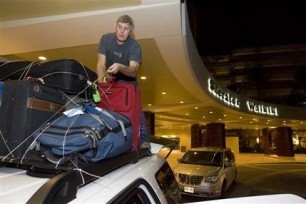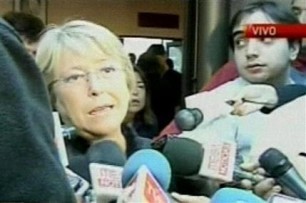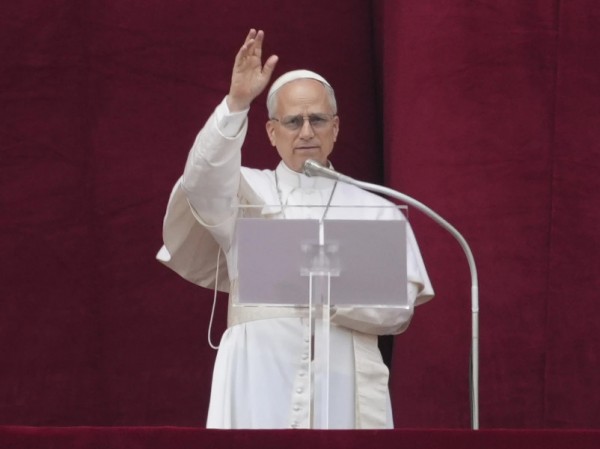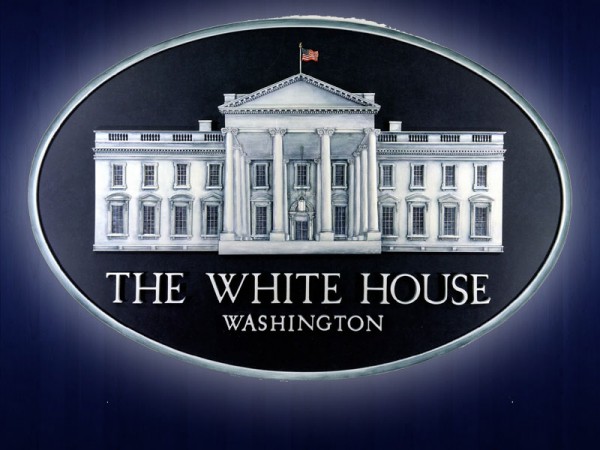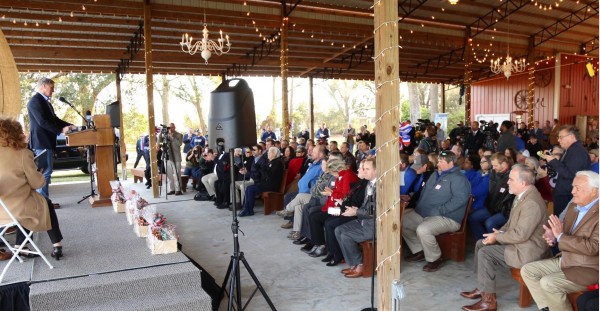UNDATED - A official at the Pacific Tsunami Warning Center says Hawaii "dodged a bullet" after a major earthquake sent powerful waves roiling around the Pacific.
It still will be about an hour before officials will be willing to give an all-clear in Hawaii, but there were no immediate reports of major damage around the Pacific rim. just tidal surges that reached up to about seven feet in some island chains.
Gerard Fryer, a geophysist for the tsunami center, defended the decision to urge evacuations of coastal areas, saying "better safe than sorry."
The first waves looked more like an extreme fluctuation in the tide than the giant tsunami that Hawaii and the rest of the Pacific Ocean were bracing for after the magnitude-8.8 quake devastated Chile.
The wave began affecting Hilo Bay on the Big Island just before noon local time. Water began pulling away from shore, exposing reefs and sending dark streaks of muddy, sandy water offshore. Water later washed over Coconut Island, a small park off the coast of Hilo.
The tsunami was causing a series of surges that were about 20 minutes apart, and the waves arrived later and smaller than originally predicted. The highest wave at Hilo measured 5.5 feet high, while Maui saw some as high as 6 feet.
The tsunami raced across the Pacific Ocean in terrifying force after the quake hit Chile hours earlier, giving Hawaii officials had ample time to get people out of the potential disaster area.
Sirens blared in Hawaii to alert residents to the potential waves. As the waves expected arrival drew near, roads into tourist-heavy Waikiki were closed off. Police patrolled main roads, telling tourists to get off the streets.
Authorities even flew overhead in a small plane blaring warnings to people to get out of the potential danger zone, and residents in Honolulu lined up at supermarkets to stock up on food and batteries. Cars lined up 15 long at several gas stations.
The tsunami fear was not unique to Hawaii.
The waves hit California, but barely registered a notice amid stormy weather. No injuries or property damage are reported. Authorities reported unusual tidal surges to the south of Santa Monica, in San Diego.
A tsunami warning - the highest alert level - was in effect for Hawaii, Guam, American Samoa, Samoa and dozens of other Pacific islands. An advisory - the lowest level - includes California, Oregon, Washington state, parts of Alaska, and coastal British Colombia.
The Navy was moving more than a half dozen vessels Saturday to try to avoid damage from the tsunami. A frigate, three destroyers and two smaller vessels were being sent out of Pearl Harbor and a cruiser out of Naval Base San Diego, the Navy said.
In Tonga, where nine people died in a Sept. 29 tsunami, police and defense forces began evacuating tens of thousands of people from low-lying coastal areas as they warned residents that waves about three feet (one meter) high could wash ashore.
"I can hear the church bells ringing to alert the people," National Disaster Office deputy director Mali'u Takai said.
QUAKE DETAILS
The quake was one of the strongest ever recorded. It toppled homes, collapsed bridges and sent cars and trucks plunging into the fractured earth.
Chileans near the epicenter were tossed about by the magnitude-8.8 quake as if shaken by a giant. At least 214 people were killed, according to Carmen Fernandez, director of the National Emergency Agency.
The quake shook buildings in Argentina's capital of Buenos Aires, and was felt as far away as Sao Paulo in Brazil - 1,800 miles (2,900 kilometers) to the east. About 13 million people live in the area where shaking was strong to severe, according to the U.S. Geological Survey.
In Talca, just 65 miles (105 kilometers) from the epicenter, furniture toppled as the earth shook for more than a minute in something akin to major airplane turbulence. The historic center of town largely collapsed, but most of the buildings of adobe mud and straw were businesses that were not inhabited during the 3:34 a.m. (1:34 a.m. EST, 0634 GMT) quake.
Neighbors pulled at least five people from the rubble while emergency workers, themselves disoriented, asked for information from reporters.
Collapsed roads and bridges complicated north-south travel in the narrow Andean nation. Electricity, water and phone lines were cut to many areas - meaning there was no word of death or damage from many outlying areas.
In the Chilean capital of Santiago, 200 miles (325 kilometers) northeast of the epicenter, a car dangled from a collapsed overpass, the national Fine Arts Museum was badly damaged and an apartment building's two-story parking lot pancaked, smashing about 50 cars whose alarms rang incessantly.
President Michelle Bachelet declared a "state of catastrophe" in central Chile but said the government has not asked for assistance from other countries. "The system is functioning. People should remain calm. We're doing everything we can with all the forces we have," she said.
Powerful aftershocks rattled Chile's coast - 41 of them magnitude 5 or greater - in the 10 hours after the quake. Six were sizable quakes in their own right, magnitude 6 or greater.
In Santiago, modern buildings are built to withstand earthquakes, but many older ones were heavily damaged, including the Nuestra Senora de la Providencia church, whose bell tower collapsed. A bridge just outside the capital also collapsed, and at least one car flipped upside down. Several hospitals were evacuated due to earthquake damage, Bachelet said.
Santiago's airport will remain closed for at least 24 hours after the passenger terminal suffered major damage, airport director Eduardo del Canto told Chilean television. TV images showed smashed windows, partially collapsed ceilings and pedestrian walkways destroyed.
Santiago's subway was shut as well and hundreds of buses were trapped at a terminal by a damaged bridge, Transportation and Telecommunications Minister said. He urged Chileans to make phone calls or travel only when absolutely necessary.
In Concepcion, Chile's second-largest city and only 70 miles (115 kilometers) from the epicenter, nurses and residents pushed the injured through the streets on stretchers. Others walked around in a daze wrapped in blankets, some carrying infants in their arms. A 15-story building collapsed, leaving only a few floors intact.
"I was on the 8th floor and all of a sudden I was down here," said Fernando Abarzua, marveling that he escaped with no major injuries. He said a relative was still trapped in the rubble six hours after the quake, "but he keeps shouting, saying he's OK."
Marco Vidal, a program director for Grand Circle Travel who was traveling with a group of 34 Americans, was on the 19th floor of the Crown Plaza Santiago hotel when the quake struck.
"All the things start to fall. The lamps, everything, was going on the floor," he said. "I felt terrified."
Cynthia Iocono, from Linwood, Pennsylvania, said she first thought the quake was a train.
"But then I thought, `Oh, there's no train here.' And then the lamps flew off the dresser and my TV flew off onto the floor and crashed."
The quake struck after concert-goers had left South America's leading music festival in the coastal city of Vina del Mar, where organizers canceled performances on Saturday, the final night of the festival. But it caught partiers leaving a disco.
"It was very bad. People were screaming. Some people were running, others appeared paralyzed. I was one of them," Julio Alvarez told Radio Cooperativa.
The largest earthquake ever recorded struck the same area of Chile on May 22, 1960. The magnitude-9.5 quake killed 1,655 people and left 2 million homeless. The tsunami that it caused killed people in Hawaii, Japan and the Philippines and caused damage to the west coast of the United States.
Saturday's quake matched a 1906 temblor off the Ecuadorean coast as the seventh-strongest ever recorded in the world.
Thursday
June 26th, 2025
11:07AM


